Benefits of Proper Roof Ventilation
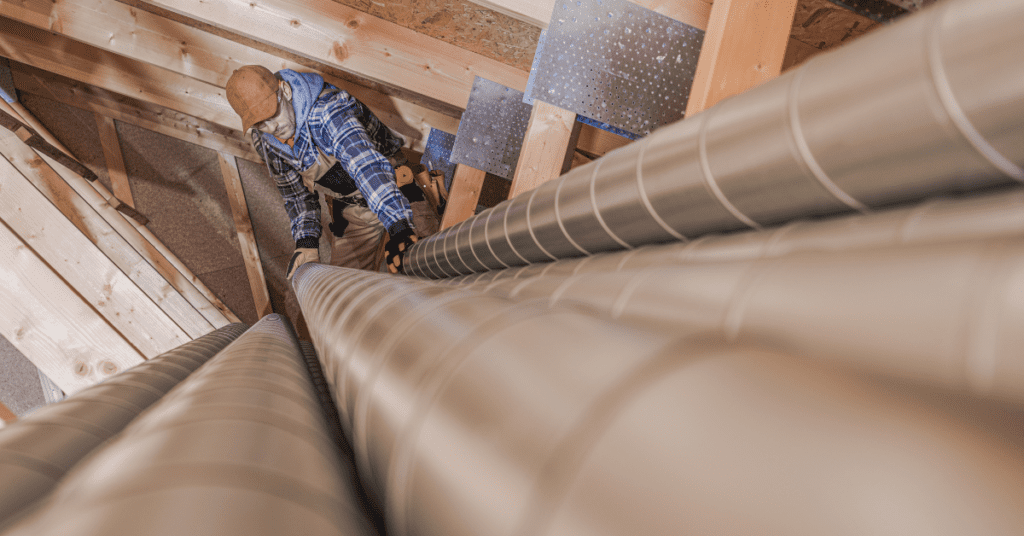

Proper roof ventilation plays a crucial role in maintaining the health and integrity of your home. With adequate airflow, you can prevent the buildup of heat and moisture in the summer, which can cause numerous problems such as roof shingle deterioration and warping of the roof deck. Let’s take a closer look at the benefits of having proper roof ventilation.
When heat and moisture get trapped in your attic, it can lead to the buckling and deterioration of your roof shingles. This can significantly impact the overall lifespan and performance of your roof. With proper ventilation, the hot air can escape, preventing any damage to your shingles. The quality of your roof shingles plays a significant role in their lifespan. Learn more about 4 qualities to look for in good asphalt shingle roofing to ensure you’re getting the best.
Furthermore, excessive heat in the attic is a warning sign of poor ventilation in your home. While it may feel cozy during winter, it can lead to uneven roof temperatures, overtaxed HVAC systems, and higher energy bills. Monitoring your attic temperature with an indoor digital wall thermometer can help determine if your home needs additional ventilation.
Visible moisture on plywood is another warning sign that your home may need better ventilation. When warm, moist air from your home gets trapped against the attic ceiling, condensation can occur. This can lead to water damage, rusted nails, and even mold or mildew growth. It’s essential to address visible moisture quickly to prevent further damage and potential health risks.
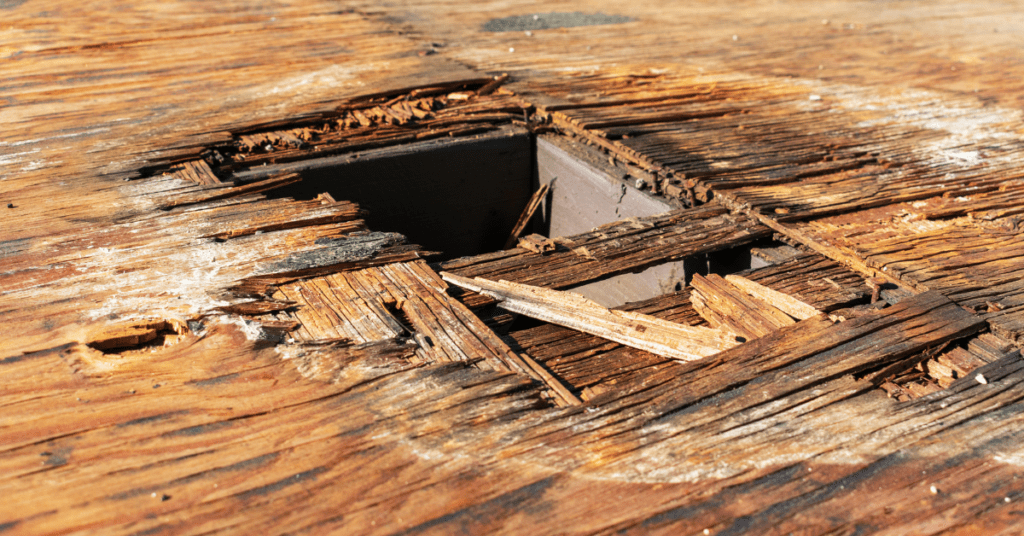

Speaking of mold and mildew, poor ventilation can create an environment that is perfect for their growth. Mold and mildew not only impact the respiratory health of your family but also deteriorate building materials such as plywood and drywall. Keep an eye out for discoloured patches and musty damp smells in your attic, as these are indicators of mold or mildew presence. Similarly, moss and algae growth can compromise the integrity of your roof. Find out how moss or algae can kill your roof and what preventive measures you can take.
Cracked or curling shingles can also be warning signs of poor ventilation. Extreme roof temperatures caused by inadequate airflow can damage shingles and compromise the overall integrity of your roof. Regular roof inspections can help you identify any shingle damage and address it promptly. Extreme temperatures, either too hot or too cold, can affect the lifespan of your roof. Discover why a roof being too hot or too cold can shorten its lifespan and how to mitigate these effects.
One of the most concerning consequences of poor attic ventilation is the formation of ice dams. Icicles may look magical, but they can be a sign of ice dams caused by trapped warm air in the attic. When this warm air melts the snow on the roof, it refreezes on lower, cooler areas, creating built-up ice dams. If not removed, these ice dams can cause shingle damage, roof leaks, and structural home damage. The formation of ice dams can cause significant damage to your roof. Discover more about ice dams on roofs and how to protect your home from winter damage.
Types of Ventilation Systems
Now that we understand the importance of proper roof ventilation, let’s explore the different types of ventilation systems available.
1. Box Vents
Box vents, also known as low-profile vents, utilize natural convection to create an opening for hot air and moisture to escape. They have no moving parts and are most effective when installed close to the roof ridge.
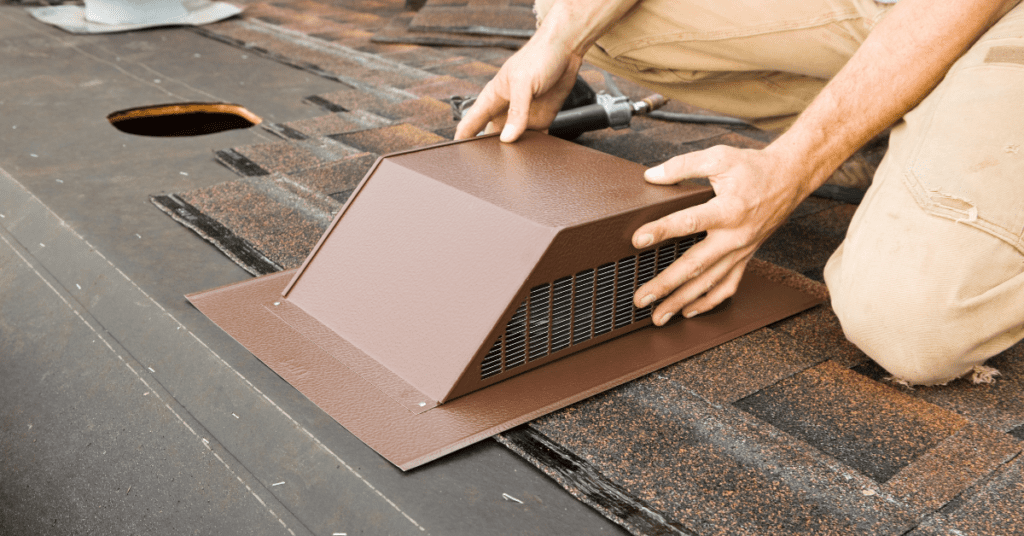

2. Wind Turbines
Wind turbines have moving parts and rely on wind power to spin and draw hot air and moisture out of the attic. High-quality wind-driven turbine vents are recommended for optimal performance.
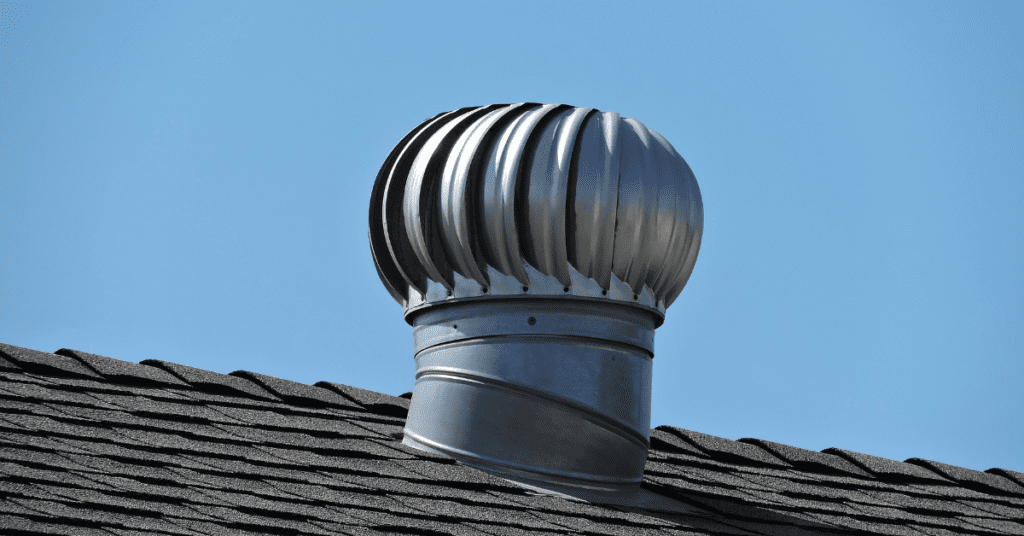

3. Power Vents
Power ventilators have motors and fans that actively drive hot air and moisture out of the attic. They can be equipped with adjustable thermostats or humidistats for efficient operation. Power vents require electricity to operate.
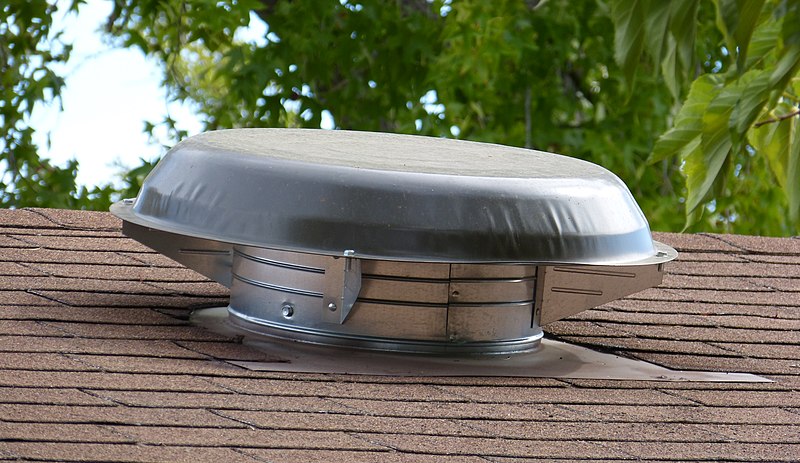

4. Ridge Vents
Ridge vents are static vents installed along the roof’s horizontal ridge. They provide even distribution of temperature and are not dependent on wind for performance. When combined with under eave venting, ridge vents create an efficient ventilation system.
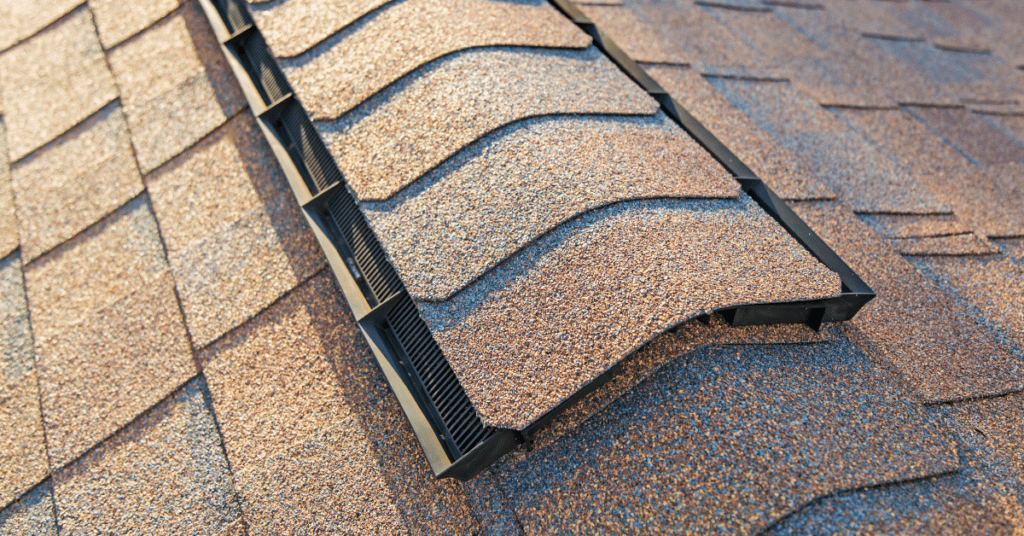

5. Off Ridge Vents
Similar to box vents, off ridge vents function by allowing hot air and moisture to escape through a cut section in the roof near the ridge. They are not the most effective option and often require several units.
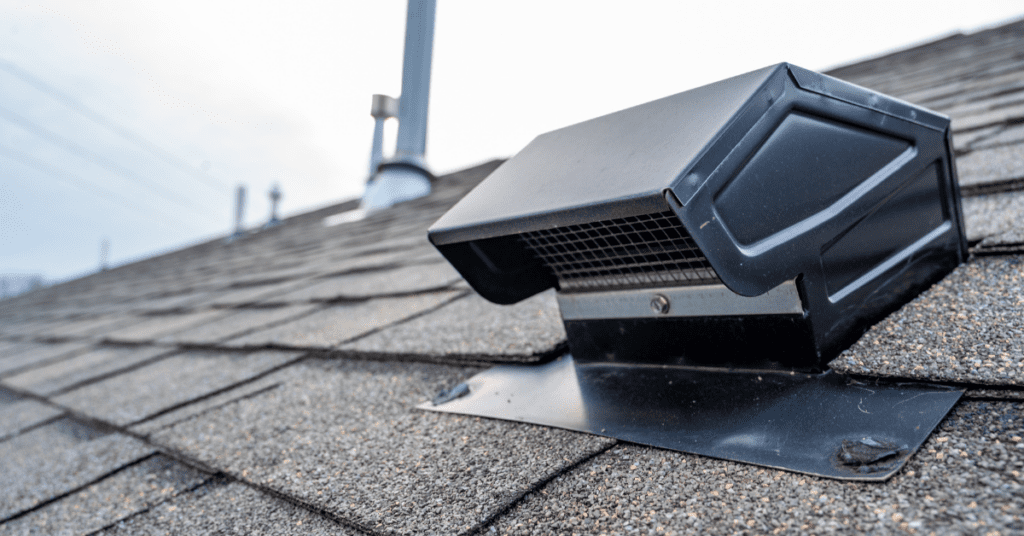

6. Cupola Vents
Cupola vents are primarily decorative but can also function as static roof vents. They sit atop a high ridge and allow hot air and moisture to escape.
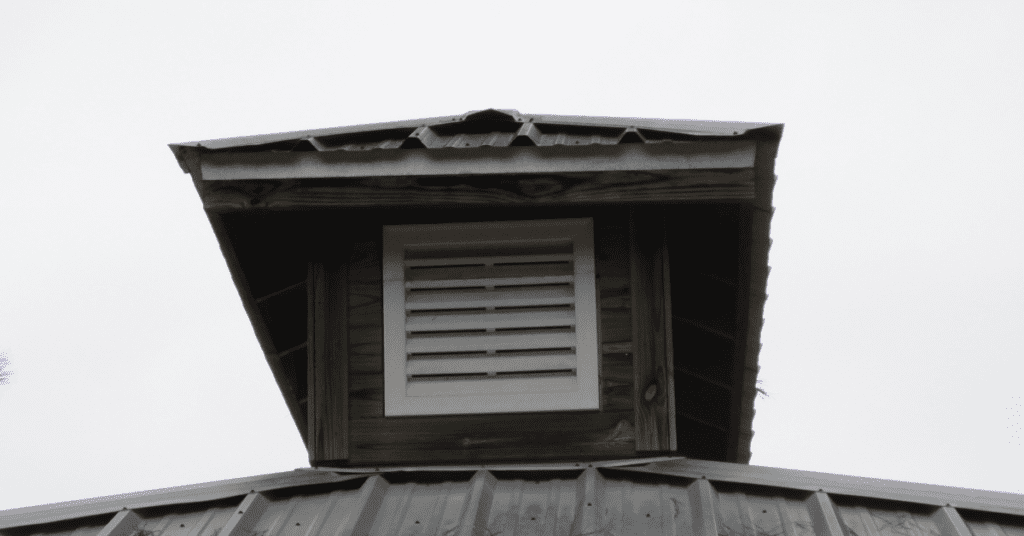

7. Soffit Vents
Soffit vents provide air intake into the roof’s ventilation system. Installed in soffits and eaves, they work best in conjunction with a continuous ridge vent to increase airflow.
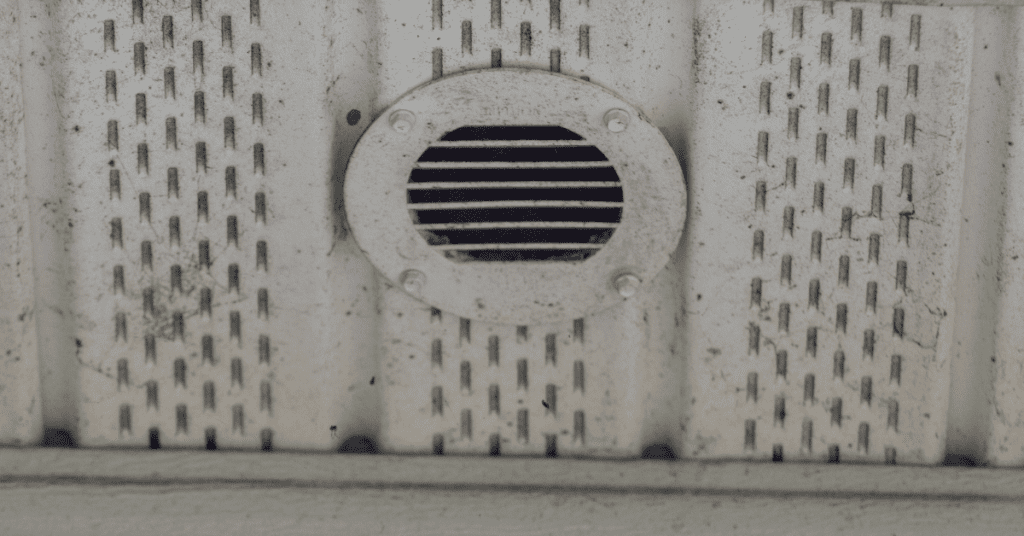

Choosing the Best Ventilation System
Selecting the right ventilation system for your home depends on various factors, including your home’s design, climate, and specific ventilation needs. Consulting with a reputable roofing contractor such as Vantage is crucial to determine the most suitable option for your home.
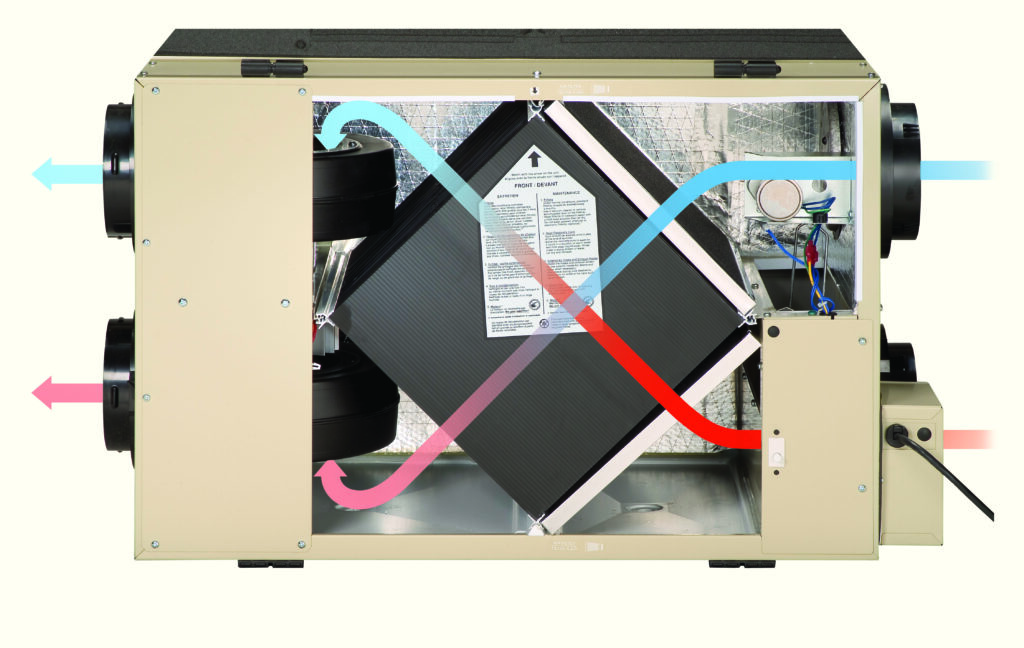

Installing an HRV (Heat Recovery Ventilation) or ERV (Energy Recovery Ventilation) system with its own ducts can be an efficient way to ventilate your home. These systems heat the incoming air and distribute it throughout the house while drawing out stale air through dedicated ducting. Proper ventilation goes hand in hand with insulation for optimal home energy efficiency. Learn more about how a roofer can improve the insulation of your roof to enhance the comfort and efficiency of your home.
Checking the Effectiveness of Roof Ventilation
To determine the effectiveness of your roof ventilation, there are a few simple checks you can perform. Look at your eaves and roof for thick ridges of ice during winter, as these are signs of poor attic ventilation. Regular inspections can help ensure your roof remains in optimal condition. Find out how often you should have your roof inspected to maintain its longevity and performance.
Finding a Reputable Roofing Contractor
When it comes to installing or repairing your roof ventilation system, it’s essential to find a reputable roofing contractor. Here at Vantage Roofing Ltd. we are a trusted option known for our expertise and professionalism in the industry. They can provide you with the necessary guidance and ensure your roof ventilation system is installed or repaired correctly. When choosing a roofing contractor, it’s vital to ask the right questions. Here are 4 essential questions to ask a roofer before you sign a roofing contract.
Conclusion
Proper roof ventilation offers numerous benefits for your home, including preventing damage to roof shingles, avoiding mold and mildew growth, and reducing the formation of ice dams. Understanding the warning signs of poor ventilation and the different types of ventilation systems available can help you make informed decisions for your home. Remember to consult with a reputable roofing contractor to determine the best ventilation system for your specific needs. With the right ventilation system in place, you can ensure the long-term health and efficiency of your home.
For homeowners, roof ventilation is not just about comfort but about the longevity and efficiency of your home. If you’re residing in any of our serviced regions, we’re here to assist.
- Burnaby roofers and roofing contractors
- Coquitlam roofers and roofing contractors
- Delta roofers and roofing contractors
- Ladner roofers and roofing contractors
- Langley roofers and roofing contractors
- Maple Ridge roofers and roofing contractors
- New Westminster roofers and roofing contractors
- North Vancouver roofers and roofing contractors
- Pitt Meadows roofers and roofing contractors
- Port Coquitlam roofers and roofing contractors
- Port Moody roofers and roofing contractors
- Richmond roofers and roofing contractors
- Surrey roofers and roofing contractors
- West Vancouver roofers and roofing contractors
- White Rock roofers and roofing contractors
- Vancouver roofers and roofing contractors
Secure your home with the best in the business. Reach out to us now and ensure your roof offers the best protection!
